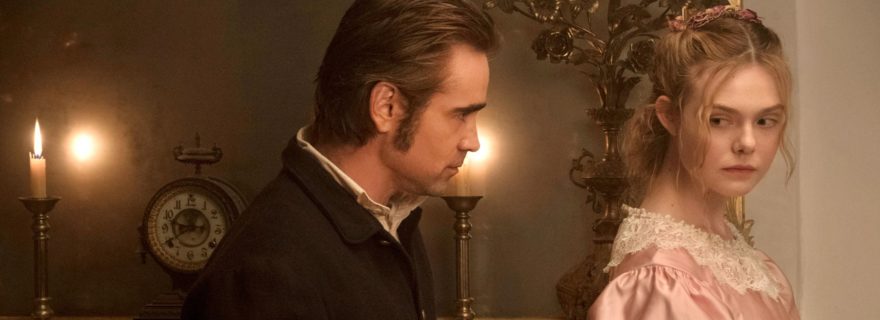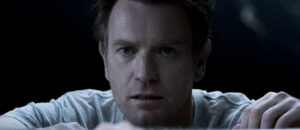'The Beguiled'
Movie Rating:
4
Reduced down to a simple logline, ‘The Beguiled’ sounds like a cheeky, sleazy, silly picture. That’s likely because when Don Siegel and Clint Eastwood made a movie out of the Thomas Cullinan novel in the 1970s, they took that approach. Now it’s Sofia Coppola’s turn, and she’s transformed the sordid tale into something sumptuously beautiful, knowingly funny, and sometimes disturbing. It’s the best thing the writer/director has made since ‘Lost in Translation’ and proof that she can live up to all the hype that accompanied the first films of her career.
‘The Beguiled’ takes place during the Civil War, set in a small girls’ school that’s near a battleground but hasn’t been swallowed up by the conflict just yet. Martha Fansworth (Nicole Kidman) runs the school with all the repressed power you’d expect, while Edwina Dabney (Kirsten Dunst) is second-in-command with a slightly more caring approach to her pupils. One day, a wounded Union soldier named John McBurney (Colin Farrell) is found near the grounds and a few of the girls bring him into the school for safety. They decide not to alert the authorities in order to avoid involvement in the war. McBurney is fine with that since being nursed back to health by a collection of young women is a far better fate than dying on a battlefield. He soon starts working some seduction magic on the staff and on a young girl named Alicia (Elle Fanning’), which sparks off some tension, jealously rivalry and eventually heavy doses of psychological horror. This premise might be goofy, silly and sexy, and Coppola is happy to indulge in those tools of titillation, but her goals are higher than mere genre treats.
As you’d expect from Sofia Coppola, the production is sumptuously mounted. The film’s photography has the soft, dreamy feel (often lurching into nightmare) that she’s mastered since the beginning of her career. The costumes are gorgeously ornate, especially when the women begin to battle for MuBurney’s affections. Mood is paramount and scenes seem to blur into each other. Time stretches and bends. Something always seems off. The aesthetic has a superficial romanticism that Coppola deliberately toys with. She presents a dreamy lost paradise, then has her broken humans slowly destroy it for each other and themselves.
The director also cast her roles exquisitely. Kidman plays a stuffy and overly controlled type that she does so well, gently pushing those common traits into psychosis without ever stretching into mugging evil (instead proving to be more quietly haunting). Coppola’s regular collaborator Dunst is heartbreaking here, delivering a woman excited by the possibility of finally finding love after assuming it would never happen, then watching that dream slip away through the harshest possible circumstances. Elle Fanning has a ball playing an arch young woman discovering her new sexual powers and almost steals the movie away with her darkly deadpan comedic take on the material. Meanwhile, Farrell covers quite a bit of ground as the token man in the cast, doing his charming rogue routine and then devolving into something far more animalistic and unhinged once the power balance shifts.
In ‘The Beguiled’, Sofia Coppola has created something deceptively serious and playfully naughty all at once. She understands the luridly comedic and satiric potential of the material and never denies it through some starkly knowing humor. At the same time, she plays up the symbolic significance of the material from a far more intelligent and restrained place. The war fights on around this strange little psychodrama, with sounds of distant cannons underlying a different battleground within the household. The film also toys with the power of female and male sexuality, both commenting on the period and in more broad generalities that offer intriguing insight. Coppola also makes a rather pointed statement about our base animalistic desires contrasted against the regal images society can thrust upon us.
There’s a lot to be mined out of this film, especially in its deeply haunting final shots, but none of the depth that the director brings to ‘The Beguiled’ detracts from deliciously deviant entertainment on the surface. She’s working on a variety of levels and all of them click without detracting from the others. Call it a frothy art film or an ambitious thriller. Both work for ‘The Beguiled’. Either way, don’t miss this finely crafted film from a director who just might be maturing into the next act of her career.




Bolo
This is pretty encouraging. I quite enjoyed the original version with Clint. I loved Coppola’s first two movies, yet have skipped everything since. So I might check this out.
NJScorpio
I had heard that the two prominent black female characters from the novel were removed from this film, as Sofia Coppola says she decided for focus on issues of gender and not issues of race…which is odd because of the historical context. The impression that I got was that the black female characters were removed because the white female characters in the story were complicit in their oppression, so this story element was removed to be more marketable to the (already anticipate) white female audience. No need to villainize your target demographic.
agentalbert
So its (in reply to NJScorpio) a southern house without servants? I guess I can understand why Coppola did that and don’t have a real problem with it as from all I’ve seen she’s clearly focusing on the sexual/gender dynamic. it’s not meant to be a history lesson.
While I haven’t seen it yet, I do have a bit of a problem with the casting of Kidman. She looks so plastic these days that buying her in a period piece seems a stretch. Nobody looked like that in 1860.
NJScorpio
If she wanted to direct/tell a story about sexual/gender dynamic, but not tell a story involving race relations, she really should have chosen a different story to adapt.
That is like making a movie taking place in Poland during WWII, but deciding to omitting any Jews, to just focus on the political aspects.